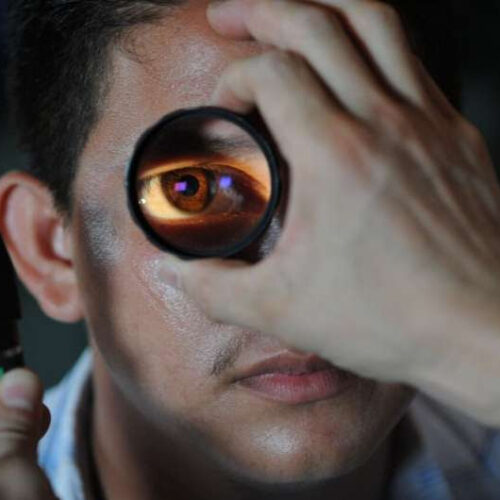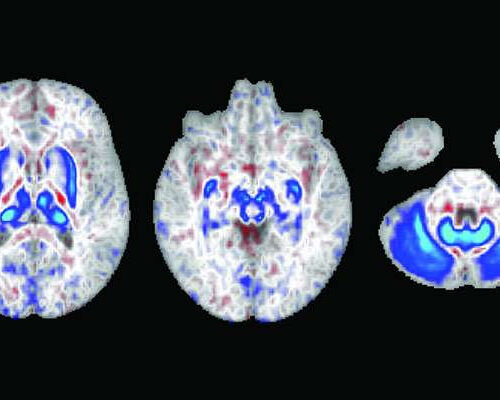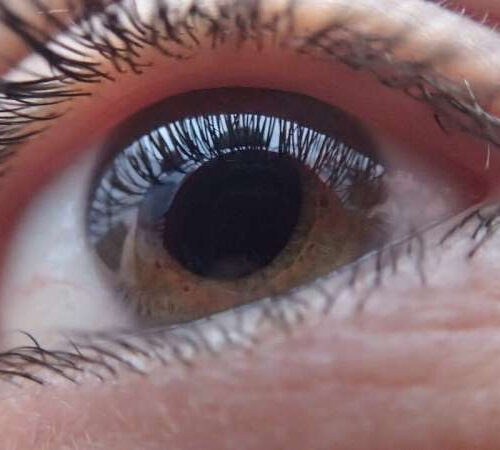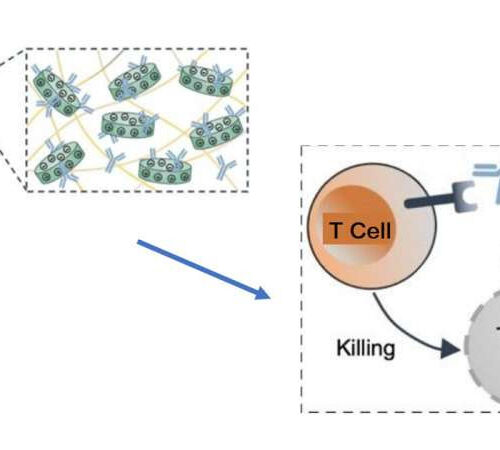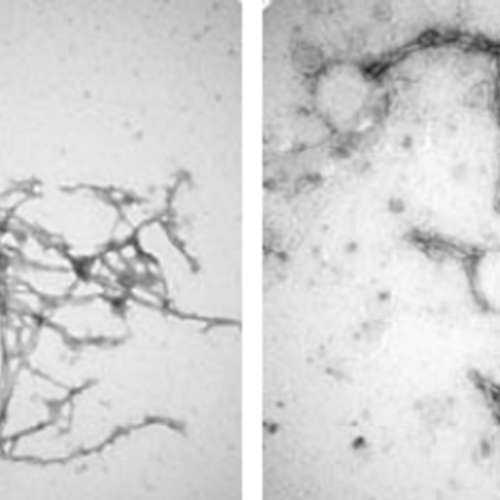by National University of Singapore (a) Schematic representation of an assembled tES shell with surface pores for entry and exit of bioorthogonal catalysis substrates and products (left) and multilayer approach to bioorthogonal catalytic center cutaway (right). (b) Chemical products of IAA and their free radical derivatives. (c) Mass spectrometry of IAA products demonstrating catalytic specificity of...
How does stroke impact your vision?
by Padmaja Sudhakar, University of Kentucky Credit: Pixabay/CC0 Public Domain The visual pathway is very long and goes from the eyes to the occipital lobe, which is the region in the cerebral hemisphere that processes vision. Since the visual pathway goes through the cerebral hemisphere on each side, stroke affecting certain areas of the cerebral...
Iron buildup in brain linked to higher risk for movement disorders
by University of California – San Diego In these brain scans, blue areas indicate regions with iron accumulation in individuals with two copies of the hemochromatosis risk gene. These regions also play a role in movement. Credit: UC San Diego Health Sciences A disorder called hereditary hemochromatosis, caused by a gene mutation, results in the body...
Supplement manufacturers often ignore FDA warning letters
A considerable proportion of products remain available for purchase after issuance of U.S. Food and Drug Administration warning letters targeting specific supplement products, according to a research letter published in the July 26 issue of the Journal of the American Medical Association. Pieter A. Cohen, M.D., from Cambridge Health Alliance in Somerville, Massachusetts, and colleagues examined...
The tongue: How one of the body’s most sensitive organs is helping blind people ‘see’
by Mike Richardson, The Conversation The tip of the tongue is more sensitive than our fingertips. Credit: Anatoliy Karlyuk/Shutterstock Ever wondered why kissing feels better than holding hands? The tongue is a pretty incredible piece of kit, though notoriously difficult to study, due to its position inside the mouth. Obviously, it gives us access to the...
High-tech imaging offers new way to detect signs of early glaucoma
by The Mount Sinai Hospital Credit: CC0 Public Domain A new, non-invasive ocular imaging method may be able to detect an early indicator of glaucoma in time to prevent disease progression and vision loss, according to a new study from New York Eye and Ear Infirmary of Mount Sinai (NYEE). The study was published in...
Destroying tumor cells: Targeted immunotherapy using injectable materials
by Terasaki Institute for Biomedical Innovation Researchers have developed a method for injectable, targeted delivery of immunotherapeutic treatments. The shear-thinning biomaterial is loaded with the ICI, which can then be delivered and released at the tumor site. The ICIs bind to T cells, preventing binding and T cell suppression by the tumor cells. This frees...
The chemical imbalance theory of depression is dead, but that doesn’t mean antidepressants don’t work
by Christopher Davey, The Conversation Credit: Shutterstock The chemical imbalance theory of depression is well and truly dead. A paper by Joanna Moncrieff and colleagues, long-time critics of the effectiveness of antidepressants, has caused a splash. The paper provides a summary of other summaries that confirm there is no evidence to support the idea that...
Using AI to reliably predict the structure of certain RNA molecules
Reviewed by Emily Henderson, B.Sc. Jul 11 2022 For the function of many biomolecules, their three-dimensional structure is crucial. Researchers are therefore not only interested in the sequence of the individual building blocks of biomolecules, but also in their spatial structure. With the help of artificial intelligence (AI), bioinformaticians can already reliably predict the three-dimensional...
Nanobody treatment could help clear brain protein clumps in Parkinson’s
By Michael Irving July 31, 2022 Left: alpha-synuclein clumps, which can accumulate in the brain and are associated with Parkinson’s disease. Right: these clumps after being treated with a new nanobody treatment.Xiaobo Mao Clumps of misfolded proteins that gather in the brain have been linked to neurodegenerative diseases like Parkinson’s. Now, newly identified nanobodies show...


